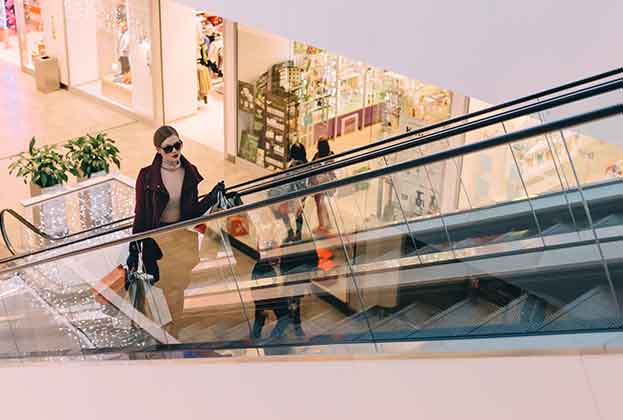The reopening of hospitality has accelerated footfall recovery in some markets, however the feed through to city centres remains hampered
Consumer and consumption trends
The easing of lockdown measures has been met with a staggered recovery to footfall.
Consumers have been tentatively returning to high streets and shopping centres across the UK since the reopening of the retail and leisure sector. The chart below represents Google mobility data, detailing movement across retail and recreation locations indexed against a five-week period pre-Covid. In the week to 2 August, total UK movement recorded a fall of 28% fall on average compared to pre-Covid. What’s evident from the data is the significant surge in movement since the reopening of hospitality from 4 July in some locations, reinforcing the strong relationship between hospitality and physical retail.
The majority of recovery has been steered by traditional leisure-led domestic holiday destinations, including Cornwall, Blackpool and the Isle of Wight, which are all now reporting positive growth compared to pre-Covid levels. The feed through to larger municipalities remains delayed in line with the ongoing absence of local office workforce and international tourism, while local lockdowns have been detrimental to recovery levels in locations such as Leicester.
In the leisure sector, a great deal of operators remain shut, emphasising the current weakness in occupier confidence. However, government support packages and easing of some local planning laws are beginning to entice consumers back in many cases. OpenTable figures suggest year-on-year seated restaurant covers were in positive territory for the first time since pre-lockdown on 3–5 August (see below), in line with the inaugural week of the Eat Out to Help Out Scheme which was used more than 10.5 million times over the three days, suggesting it’s contribution to the F&B sector could be instrumental at this time.
What do recovering footfall levels mean for retail sales?
The lasting economic effect caused by the pandemic and subsequent lockdown continues to restrict any major bounce in consumer confidence, with GfK’s latest monthly index suggesting sentiment for spend remains subdued whilst personal saving is up. The potential increase in unemployment post-furlough drives ongoing uncertainty in the consumer market, during which the continuation of distancing measures and safety restrictions will hinder the potential for physical retail sales to flourish in the short-term. Savills data from key UK retailers indicates that trade has been slow to recover in destination-led retail places, with consumers continuing to favour local and convenience-based retail locations (see below).
As a result, 2020 retail spend forecasts have dampened significantly with GlobalData estimating year-end volumes to be down 3.9% year-on-year, and £20.1 billion lighter than pre-Covid projections. This drop in spend is expected to be led primarily by those more exposed subsectors including fashion and footwear. However this isn’t homogeneous across all retail segments with some submarkets enjoying a return to sales growth, above that of the same period last year. Foodstore performance continues to outperform, with take-home grocery sales up 16.9% for the 12 week period to 12 July, according to Kantar. The homeware sector also appears to have thrived as of recent, with the BDO July sales barometer recording a 33.6% year-on-year growth in like-for-like sales – a stark contrast compared to other subsectors and outstripping the UK average of -4.6%.
Early indications suggest that the peak in ecommerce seen in May, with 32.8% of retail being online, is now settling to a new level. The question is where to?
Savills Research
Since physical retail reopened, the sector has experienced a very measured recovery with spend likely to lag behind pre-Covid levels for some time. As a result, government support will continue to be pivotal for the survival of many businesses. However, recent improvements within parts of the market have begun to highlight elements of progress within the UK retail market.
What is the future for ecommerce?
Early indications suggest that the peak in ecommerce seen in May, with 32.8% of retail being online, is now settling to a new level. The question is where to? Centre for Retail Research forecast that by the end of 2021, penetration will account for 24.3% of retail spend (up from 19.4% in 2019); this fits with our own analysis. If true, then this sees a five year acceleration in the move online.
While footfall and hospitality sales may have begun to slowly recover, the latest figures show little abatement in the inexorable rise of online grocery shopping. Online sales for the period soared 92%, with one in five UK households having utilised the channel in some form to buy groceries. Online is now worth 13% of the total grocery market, up from just 7.4% in March when lockdown began and continues to be a compelling proposition for those that have already switched.
However, while online growth has been substantial, a significant proportion of all retail transactions remain instore. The increase in penetration will not affect all spaces equally, but will inevitably reduce some store portfolios and increase retail vacancy where the offer is not sufficiently in tune with the needs of the catchment.
Read the articles within Spotlight: UK Retail Outlook Report below.


